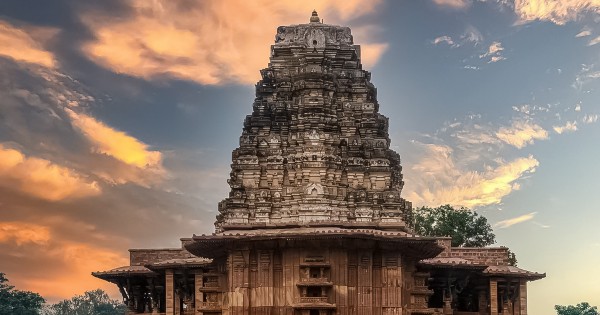Telangana's First World Heritage Site: Ramappa Temple

The historic Ramappa Temple, an emblematic architectural marvel and Telangana's first UNESCO World Heritage Site, is a Kakatiya-style Hindu temple dedicated to Lord Shiva, with ornate carvings and shrines.
The iconic temple, located in Palampet Village on the bank of Ramappa Lake in Mulugu District, is now India's 39th World Heritage Site. It was named after its architect Ramappa, making it the only temple in India to do so. It is also known as the Rudreswara Temple and exemplifies the great Kakatiya dynasty's outstanding craftsmanship.
During the Kakatiya period, between the 12th and 13th centuries, Recharla Rudra, a general of Kakati Ganapati Deva, built the temple. The main temple was started in 1213 CE and finished 40 years later.
Architecture at its Finest
The awe-inspiring magnolious architecture stands regally on a 6-foot (1.8-meter) high star-shaped platform, with the Garbhagriha, Antarala, and Maha Mandapa on three sides, with lateral porched entrances. It has a four-tiered pyramidal Sikhara in brick work that is externally cruciform in plan and is fronted by an Antarala (vestibule) with a Shukanasi roof. To reduce the weight of the superstructure, the bricks used are light-weight and porous.
A black basalt Linga is installed on a high pedestal in the Garbhagriha. The Maha Mandapam, also known as the main hall, is supported by four curved pillars with elaborate detailing, and the roof is engraved with beautiful Shiva Purana details. Sculptures depicting scenes from the Ramayana and other mythological stories can also be found on the ceiling. Above the Kakshasana level, which is decorated with thin, graceful Madanikas, Naginis, and other figures in different poses, there is an arrangement of bracket figures that stands out.
Other structures within the outer part of the temple sanctum, Prakara, include an imposing Nandi Mandapa (where Nandi, Shiva's guardian deity, faces the main shrine), Kameswara shrine, Kateswara shrine, Pakashala, and an inscribed pillar.
Reflection of Kakatiya Culture
The temple represents the architectural and cultural splendor of the former rulers of Orugallu, modern-day Warangal, whose kingdom spanned much of modern Telangana and Andhra Pradesh. It also exemplifies Kakatiyan artistic and technological traditions through its structures within the walled temple compound and its surrounding landscape. The sculptures, particularly those at the Temple, are excellent artistic representations of Kakatiya dance customs and cultural traditions. These characteristics attest to Kakatiya customs and temple rituals, as well as construction technology, materials, and other sculptural and elemental works demonstrating creative abilities in terms of craftsmanship.
Rudreshwara Temple is a singular testimony to the Kakatiya period's highest level of creative, artistic, and engineering expression. It is also evidence of a flourishing agriculture-based society in the 12th century on land devoid of perennial water sources.
Tips for Visitors
The temple is open every day from 6:00 am to 6:00 pm. However, visiting hours may differ during Bathukamma, a Hindu goddess festival celebrated primarily in Telangana and some parts of Andhra Pradesh. It is a wheelchair-accessible site with four-wheeler parking, canteens, and restrooms.
The road to this location is good, making it an easy destination to reach by car or personal vehicle. Warangal, about 70 km away, is the closest city to the temple. The temple is about 15 km from Mulugu and about 210 km from Hyderabad. The temple is approximately 240 km from the HITEX Exhibition Center and may take up to
5 hours to reach by car.
Distance from HITEX: 240 Km
Travel Time: 5-5:30 Hrs
Time of visit: 6:00 AM - 6:00 PM
